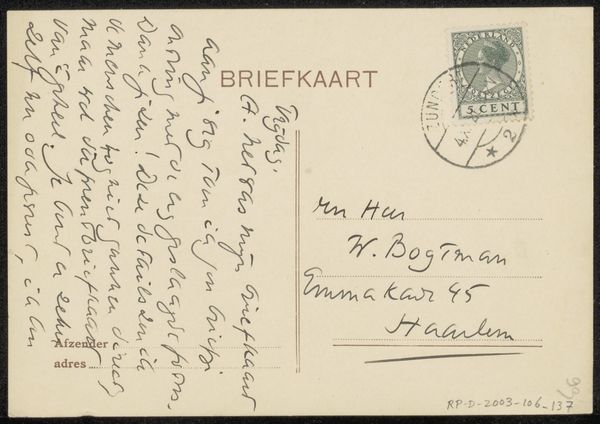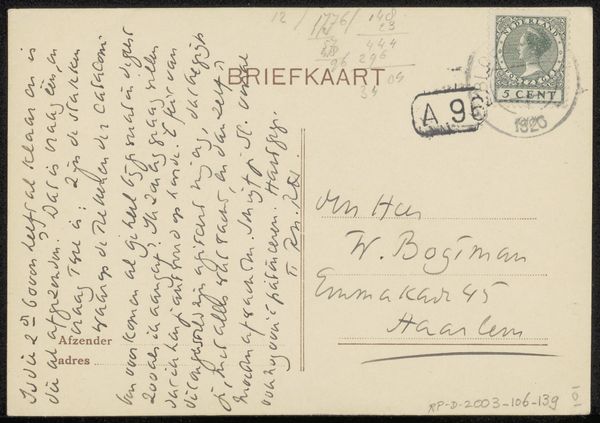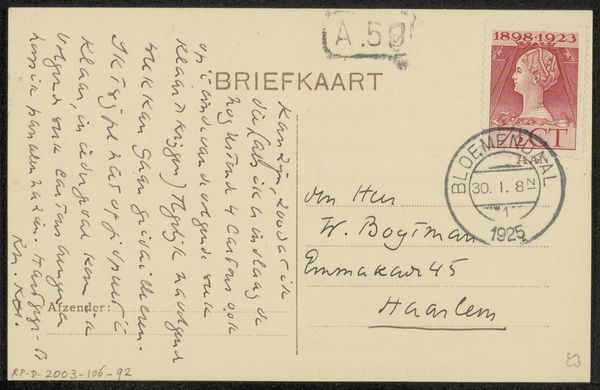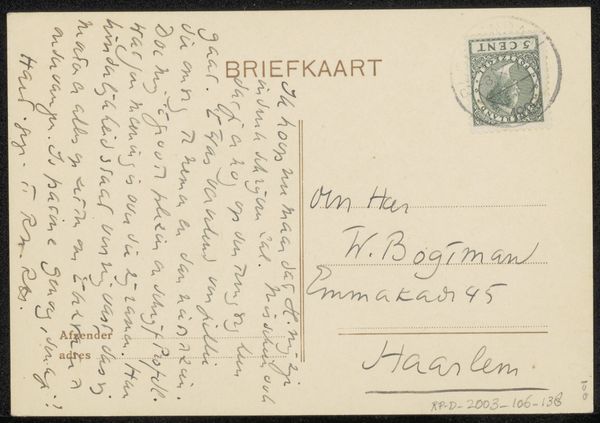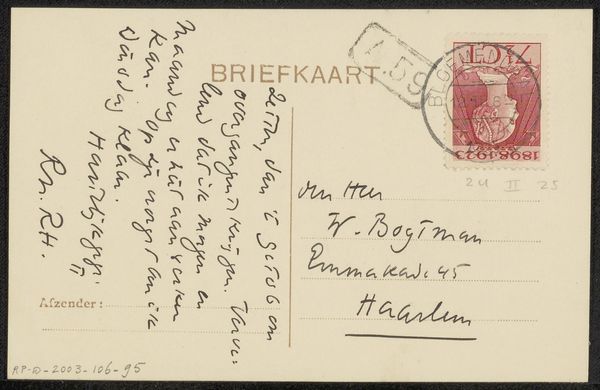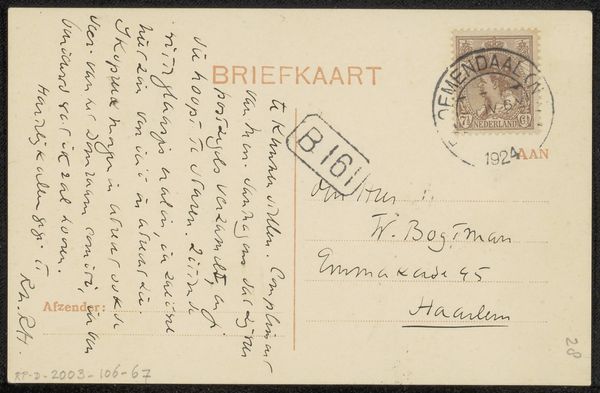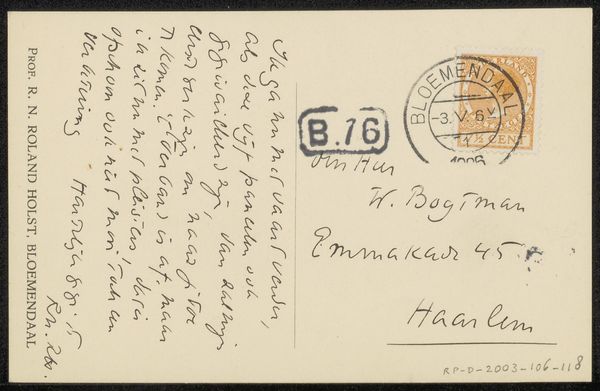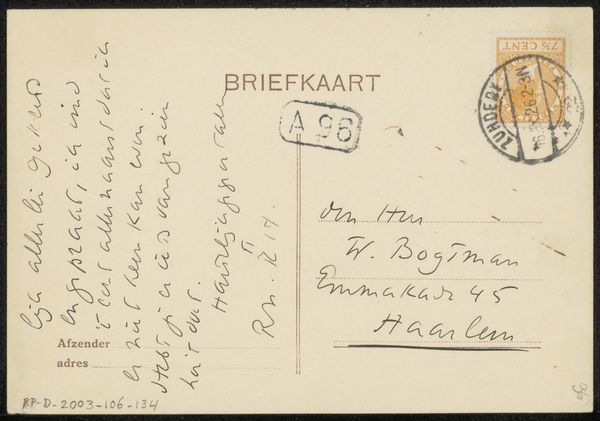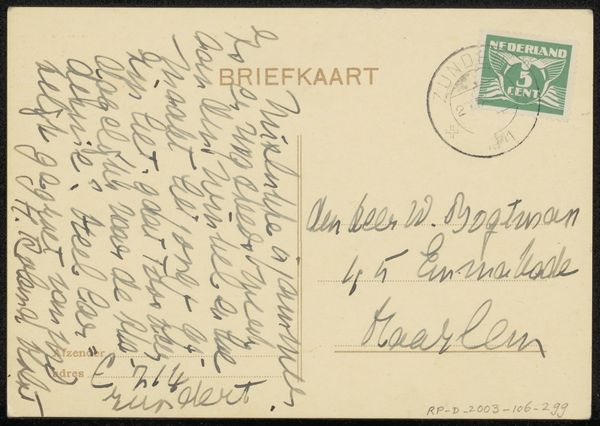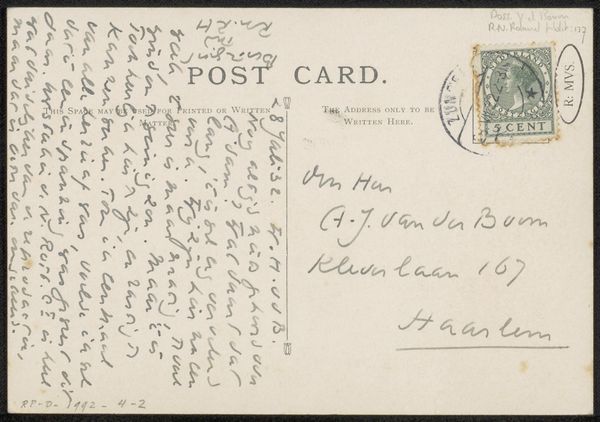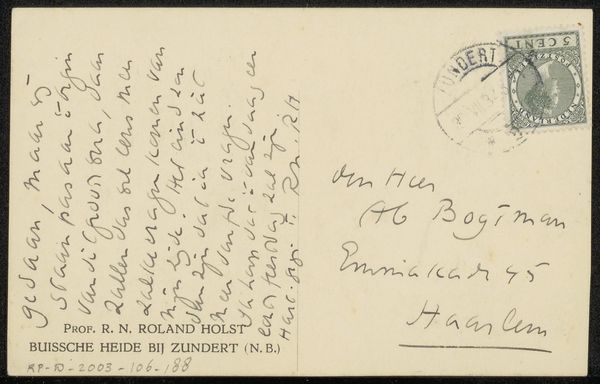
drawing, collage, textile, paper, photography, pen
#
drawing
#
collage
#
pen sketch
#
textile
#
paper
#
photography
#
pen
#
mail-art
Copyright: Rijks Museum: Open Domain
Editor: This work is a postcard addressed to Willem Bogtman, likely from sometime between 1926 and 1928, by Richard Nicolaüs Roland Holst. It's a fascinating mix of pen sketch, collage, and what appears to be textile. I find the juxtaposition of handwritten text and what seems like printed matter very intriguing. How do you interpret this seemingly simple, yet complex little piece? Curator: Well, it’s not so simple is it? This "mail-art" represents a fascinating intersection of personal communication and artistic expression in the early 20th century. Consider the context. The postal service had become an increasingly reliable means of communication and dissemination of ideas. And then, the use of collage reflects the influence of Dada and Surrealism. Think about the socio-political upheaval following World War I, and the art world questioning traditional modes of representation and communication. Holst integrates various textual elements – a formal printed address, handwriting that suggests intimacy, maybe the stamp too – and layers them in ways to create new meaning. Don’t you think this is indicative of art entering daily lives? Editor: Absolutely. The everyday use of a postcard is definitely elevated, turned into a new artistic context. But do you think Holst intended it as high art, or simply as a creative form of correspondence? Curator: Ah, the artist's intention! Always a tricky question. While Holst was undoubtedly a trained and accomplished artist, I’m inclined to believe he considered the political implications too. Its public role could be as communication with an aesthetic enhancement – thus rendering that exchange more memorable than your average communique! I see it as evidence of an avant-garde approach that questions the role of the artist within social norms and hierarchies. It's pushing the boundary between the gallery and the everyday world. Editor: That's a fantastic point. Considering the cultural and social context really helps unlock the potential meaning in what might otherwise seem a commonplace object. I appreciate you guiding me. Curator: Likewise. Thinking about these issues enriches one’s view about Holst’s motivations when creating artworks like these!
Comments
No comments
Be the first to comment and join the conversation on the ultimate creative platform.
